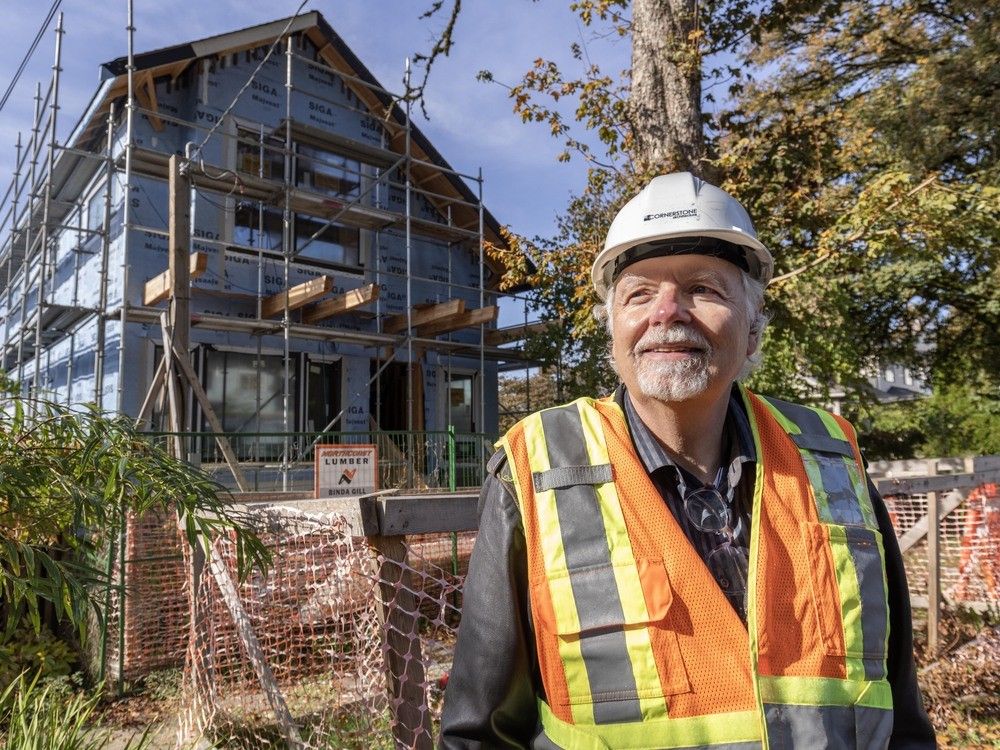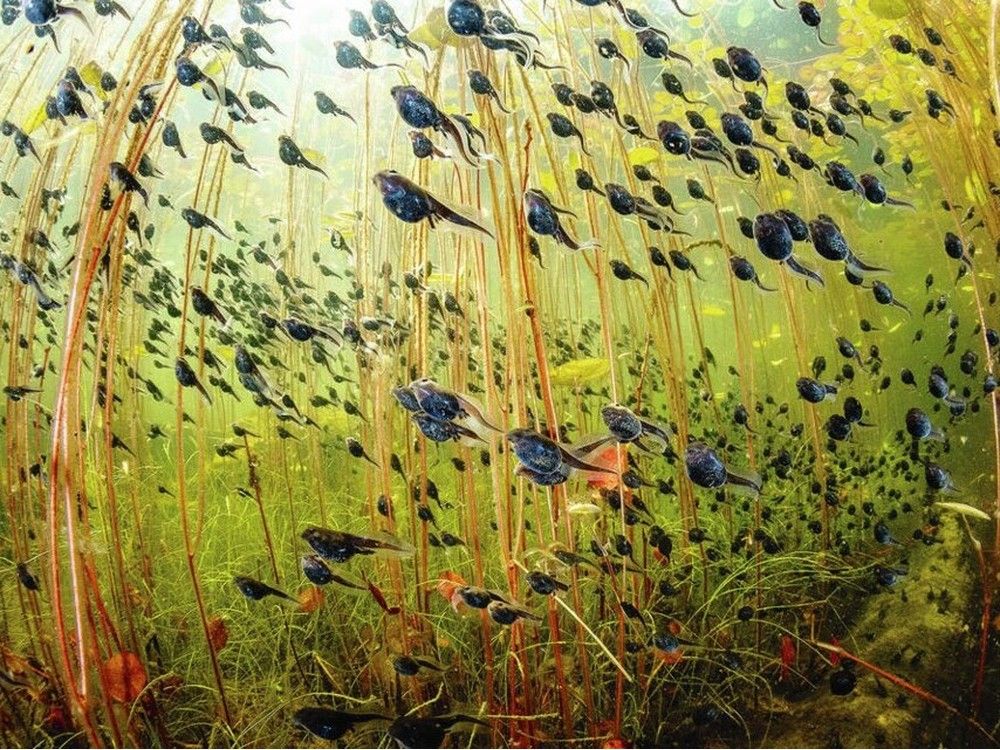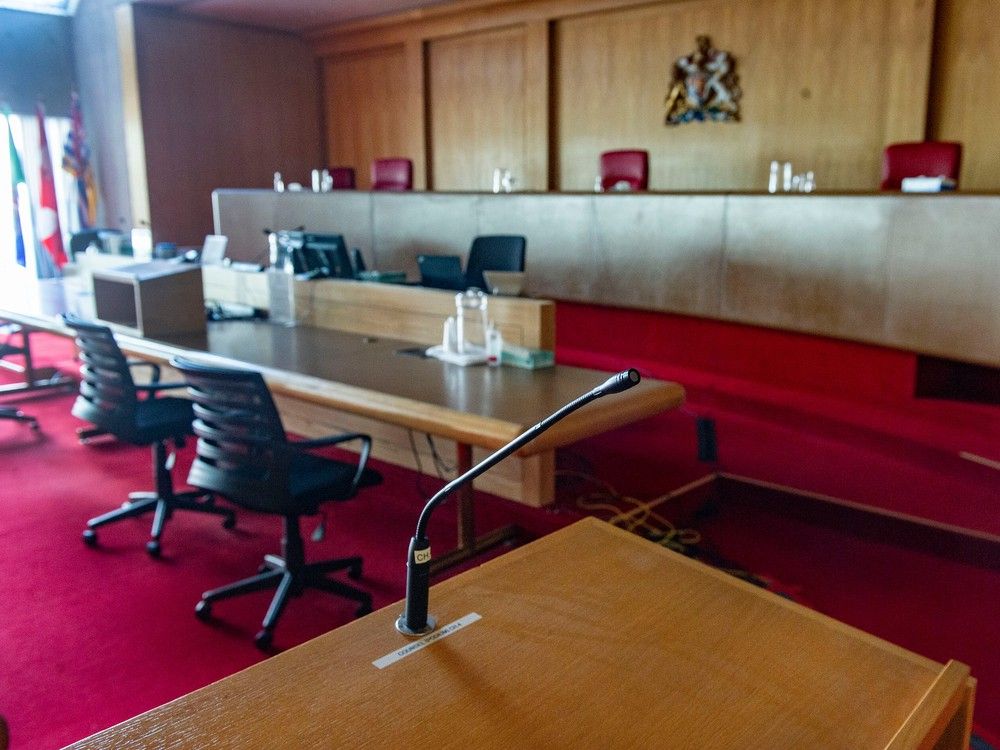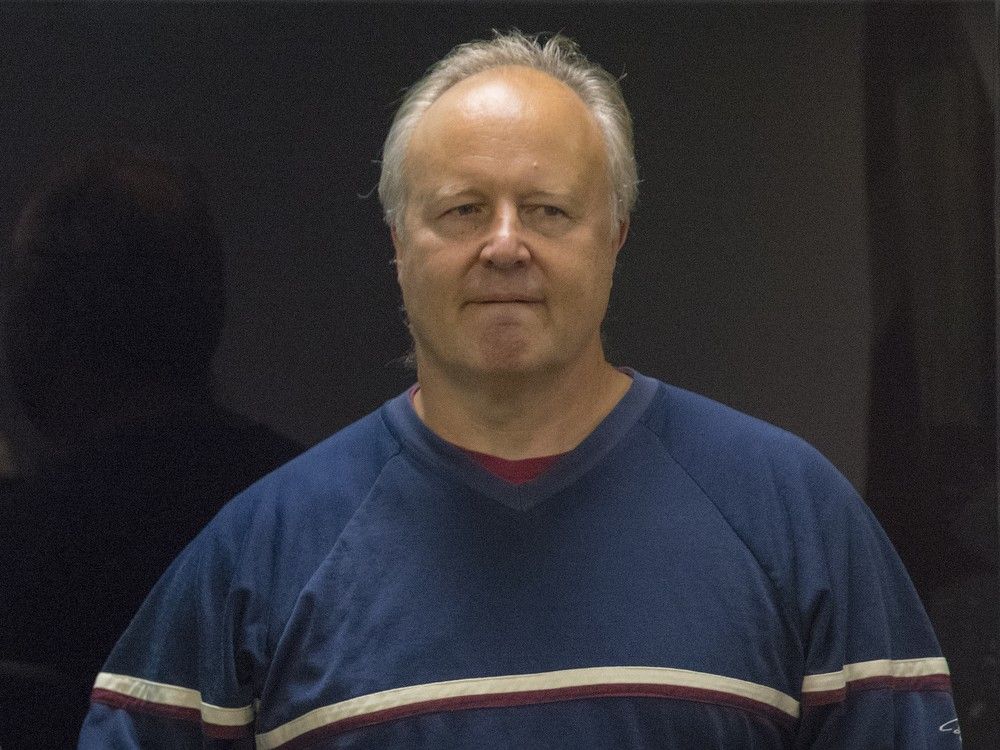Tree removals have left openings in the park's forest, but park staff are finding signs of new life, though the overall plan still faces opposition.
Published Oct 12, 2024 • Last updated 0 minutes ago • 6 minute read

Almost a year after 8,000 dead trees were removed from a swath of Stanley Park’s forest on the west side of Prospect Point, there are hopeful signs of new life.
While taking reporters on a tour of the forest, Vancouver park board senior manager Joe McLeod pointed out the grand fir, western red cedar and spruce seedlings that had been planted. He explained how the city is trying to replant beneath the newly opened canopy with tree species that are more representative of a West Coast forest than the multitude of hemlock trees that had been decimated during a moth infestation between 2019 and 2023.
Advertisement 2
THIS CONTENT IS RESERVED FOR SUBSCRIBERS ONLY
Subscribe now to read the latest news in your city and across Canada.
- Unlimited online access to articles from across Canada with one account.
- Get exclusive access to the Vancouver Sun ePaper, an electronic replica of the print edition that you can share, download and comment on.
- Enjoy insights and behind-the-scenes analysis from our award-winning journalists.
- Support local journalists and the next generation of journalists.
- Daily puzzles including the New York Times Crossword.
SUBSCRIBE TO UNLOCK MORE ARTICLES
Subscribe now to read the latest news in your city and across Canada.
- Unlimited online access to articles from across Canada with one account.
- Get exclusive access to the Vancouver Sun ePaper, an electronic replica of the print edition that you can share, download and comment on.
- Enjoy insights and behind-the-scenes analysis from our award-winning journalists.
- Support local journalists and the next generation of journalists.
- Daily puzzles including the New York Times Crossword.
REGISTER / SIGN IN TO UNLOCK MORE ARTICLES
Create an account or sign in to continue with your reading experience.
- Access articles from across Canada with one account.
- Share your thoughts and join the conversation in the comments.
- Enjoy additional articles per month.
- Get email updates from your favourite authors.
THIS ARTICLE IS FREE TO READ REGISTER TO UNLOCK.
Create an account or sign in to continue with your reading experience.
- Access articles from across Canada with one account
- Share your thoughts and join the conversation in the comments
- Enjoy additional articles per month
- Get email updates from your favourite authors
Sign In or Create an Account
or
Article content
As he crouched down to examine one fir seedling, he spotted the tiniest sprig of a new Douglas fir tree that had sprouted on its own.
“That’s established purely from seed this year,” said McLeod, the park board’s associate director of urban forestry and a registered arborist. “As much as we actively intervene to manage the forest, it’s also reassuring that nature does what it does. Seeds are going to germinate and a new forest will also establish.”
McLeod led the tour as the park board prepares to embark on the second phase of a plan approved at its Oct. 8 meeting to recover from the western hemlock looper infestation that killed off some 160,000 trees, mostly western hemlock.
The park board is now clearly spelling out its plan that involves removing a fraction of that number, not the total stated in an earlier park board bulletin.

The plan, however, still faces opposition by members of the recently formed Stanley Park Preservation Society who contend that even the limited removals proposed are unnecessary and that far from helping the park recover, has risks to park ecology including the introduction of invasive species.
By signing up you consent to receive the above newsletter from Postmedia Network Inc.
Article content
Advertisement 3
Article content
The second phase will involve removing 4,000 trees in the area of Brockton Point and around the Vancouver Aquarium. By the time the third phase is complete next year, McLeod expects 20,000 to 30,000 trees will have been removed as a matter of public safety and to reduce wildfire risk in the park at a cost of around $16 million.
Removals will focus on trees larger than 20 cm in diameter close to the park causeway, primary roads, trails, the seawall and high-use areas such as the Vancouver Aquarium and Prospect Point, where the initial removals have taken place.
“The trees that are generally considered (for removal) are within 1½ times the tree height of a high-use area, then it’s considered of risk,” McLeod said.
So if a large, dead tree is 30 metres tall, the closest they want it to be to a trail, road or attraction is 45 metres. Closer than that, McLeod said, arborists will consider removing at least the top of the tree “and in some cases, we’re removing the whole tree.”

The second phase will begin in mid-October through November and McLeod said the work will take place during time windows defined by the Wildlife Act to protect nesting birds and riparian zones.
Advertisement 4
Article content
Their multidisciplinary team has also been working with First Nations to protect culturally modified trees and come up with replanting prescriptions aimed at bringing back native species such as western red cedar, fir, spruce, broadleaf maple and yew trees, which was a specific request, McLeod said.
“Ultimately, I think the entire project team are dedicated to the long-term stewardship of the park,” McLeod said. “We recognize it’s a real jewel for the people of Vancouver, but also the 20 million-plus people who visit Vancouver (and) Stanley Park annually.”
Opponents, however, are still trying to put the brakes on the plan approved by the park board and are skeptical of the number of trees to be removed that the board’s staff have talked about.
“The plan that was approved by the Board of Parks and Recreation on this last Tuesday does not specify (a number) at all,” said Stanley Park Preservation Society spokesperson Michael Caditz.
The preservation society, over the summer, sued the park board in B.C. Supreme Court seeking an injunction against the removals. Although their application was rejected Oct. 3, Caditz said they haven’t “thrown in the towel” and will likely be back in court in the next couple of weeks.
Advertisement 5
Article content
“Our position is (that) this entire large-scale, pre-emptive tree removal operation is not only unnecessary but is damaging the park and is creating more risk,” Caditz said.
The preservation society enlisted its own roster of seven experts, horticulturalists, arborists and a fire-behaviour specialist who came to different conclusions about the number of trees in need of immediate removal and the risks posed by removing patches of trees in sizes specified by the park board’s contractor, Blackwell and Associates.
Caditz said their assessments included risks for patch removals to introduce invasive species, change the park’s microclimates and alter forest composition.
He added that all the park board needs to do is maintain the status quo of its hazardous-tree assessment rules and remove just trees at imminent risk of falling down, which he guessed might only number in the hundreds, and park staff have the capacity to do that on their own.

However, Metro Vancouver had its own problems with the same moth infestation. In 2022 and 2023, it removed 300 trees near roads or homes adjacent to its Lynn Headwaters Regional Park and replanted 1,700 western red cedar and fir trees.
Advertisement 6
Article content
Forest ecologist Allan Carroll said there is a good case for taking some action to remove dead trees in Stanley Park, a landscape that has constantly been altered and suffered disturbances long before it was a park.
If the infestation happened in a more remote provincial or national park, Carroll, who is director of forest science in the University of B.C.’s faculty of forestry, said the mandate would be to let nature take its course. In Stanley Park, however, officials’ “hands are tied,” owing to the risk of a tree falling on someone.
“I confess to having a great deal of sympathy for, well, all three sides of this,” Carroll said. “The park managers, the people that have been contracted to take the trees down, and then the local residents who are faced with watching this.”
Carroll said hemlock trees don’t stay standing long after looper moth larvae chew off their needles and leave them for dead. They don’t resist rot and predation by insects and woodpeckers like red cedar or fir trees.
He added that the species of trees the park board is replanting — cedars, firs, spruce and maple — are examples of “shade tolerant” species that would typically be present in the forest understory waiting to exploit openings of light when a tree falls, or in this case, is removed.
Advertisement 7
Article content
“So, in essence, planting them now is really just sort of giving (forest) succession a leg up,” Carroll said. “It’ll lead to a an ecosystem made up of more diverse species, which is where the park was headed anyway.”
Recommended from Editorial
-

Court denies bid to temporarily halt removal of moth-infested Stanley Park trees
-

Criticism mounts over plans to clear one-third of Stanley Park’s trees
Bookmark our website and support our journalism: Don’t miss the news you need to know — add VancouverSun.com and TheProvince.com to your bookmarks and sign up for our newsletters here.
You can also support our journalism by becoming a digital subscriber: For just $14 a month, you can get unlimited access to The Vancouver Sun, The Province, National Post and 13 other Canadian news sites. Support us by subscribing today: The Vancouver Sun | The Province.
Article content
.png)
 6 days ago
16
6 days ago
16




































 Bengali (BD) ·
Bengali (BD) ·  English (US) ·
English (US) ·